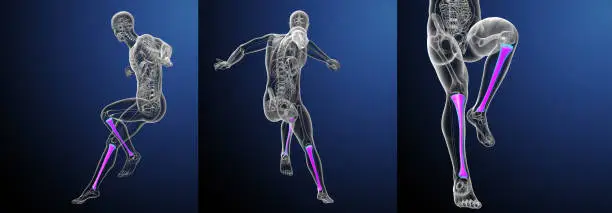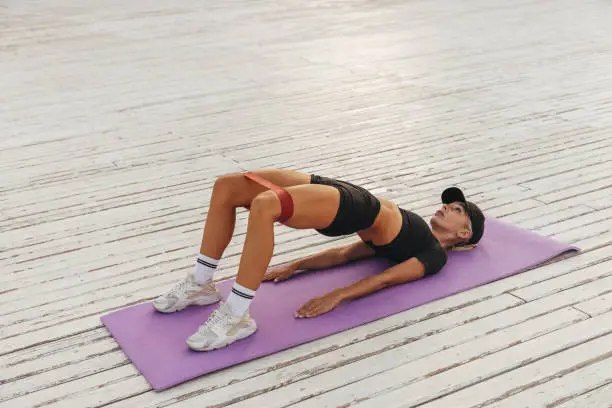Introduction
When it comes to lower body exercises, most people tend to focus on squats, lunges, and deadlifts, all of which target the glutes, quads, and hamstrings. However, the hip adduction benefits—the muscles on the inner part of the thighs—are often overlooked. Strengthening the hip adductors through hip adduction exercises can improve your overall fitness, enhance athletic performance, and even prevent injuries.
In this comprehensive guide, we’ll explore the benefits of hip adduction, how to perform exercises, and why they should be an essential part of your workout routine.
1. What is hip adduction?
Hip adduction refers to the movement of the leg toward the body’s midline. The muscles primarily responsible for this movement are the adductor muscles, which include:
- Adductor longus
- Adductor brevis
- Adductor magnus
- Gracilis
- Pectineus
These muscles are located on the inner thigh and work together to control the movement of the leg. Strengthening the hip adductors through specific exercises like hip adduction machine workouts or cable adduction exercises helps enhance the stability and functionality of the hip joint.

2. Benefits of Hip Adduction Exercises
Improved Athletic Performance
Many sports and physical activities, such as running, soccer, skiing, and martial arts, require strong hip adductors. Strengthening these muscles can improve your agility, speed, and balance. Hip adduction exercises contribute to a more powerful stride in running and help stabilize your body during lateral movements.
Injury Prevention
Weak adductors can lead to muscle imbalances, increasing your risk of injuries, especially in the hips, knees, and lower back. Strengthening your hip adductors can help prevent injuries like groin strains, which are common among athletes who perform a lot of side-to-side movements.
Enhanced Balance and Stability
The hip adductors play a key role in stabilizing the pelvis and legs. By incorporating hip adduction exercises into your workout routine, you can improve your overall balance and stability, making it easier to perform other exercises, daily activities, and sports.

Improved Posture
Strong hip adductors contribute to better pelvic alignment, which in turn can improve your posture. By keeping your pelvis and legs aligned, you reduce the risk of compensatory movements that may cause strain on other muscles and joints.
Toned Inner Thighs
For many people, toned inner thighs are a fitness goal. Hip adduction exercises specifically target the inner thigh muscles, helping to tone and strengthen this often-neglected area. This not only improves the appearance of your legs but also increases functional strength.
3. Common Hip Adduction Exercises
Here are some of the most effective hip adduction exercises to incorporate into your routine:
Seated Hip Adduction Machine
The seated hip adduction machine is one of the most popular exercises to isolate and strengthen the hip adductors. To perform the exercise, sit on the machine, place your legs on the padded supports, and press inward using your inner thighs. This exercise is great for building strength and stability in the adductors.
Standing Cable Hip Adduction
The standing cable hip adduction is an excellent exercise to strengthen the inner thighs while also improving balance. Attach an ankle strap to a low cable pulley, stand with your side to the machine, and pull your leg toward the midline of your body. This movement mimics the natural adduction of the hip, engaging the adductor muscles.
Side-Lying Hip Adduction
The side-lying hip adduction is a simple but effective bodyweight exercise that targets the adductors. Lie on your side with your lower leg extended and your upper leg bent in front of you. Lift your lower leg toward the ceiling, engaging your inner thigh muscles. This exercise is great for beginners and requires no equipment.

Sumo Squats
While squats primarily target the glutes and quads, sumo squats place additional emphasis on the inner thighs. With a wider stance and toes pointed outward, sumo squats engage the adductors more than traditional squats. This exercise not only strengthens your thighs but also works your core and glutes.
Adductor Stretching
Although not a strengthening exercise, adductor stretching is crucial for maintaining flexibility in the inner thighs. Flexible adductors can prevent injury and improve your range of motion. A common adductor stretch involves sitting with your feet together (butterfly position) and gently pressing your knees toward the floor.
4. Who Should Perform Hip Adduction Exercises?
Athletes
Athletes, especially those involved in sports requiring quick lateral movements (such as soccer, basketball, tennis, or hockey), can benefit significantly from strong hip adductors. Including hip adduction exercises in their training can help enhance performance and reduce injury risks.
Individuals with Hip or Groin Injuries
For individuals recovering from hip or groin injuries, strengthening the adductors can help in the rehabilitation process. Under the guidance of a physical therapist, exercises can be introduced to help restore strength and stability to the area.
People Looking to Improve Leg Aesthetics
If your goal is to improve the appearance of your legs, especially the inner thighs, hip adduction exercises should be part of your routine. Regularly performing these exercises can help you achieve leaner, more defined thighs.
5. Hip Adduction and Core Strength
The hip adductors also contribute to core stability. When you strengthen your adductors, you’re not just working the legs; you’re also helping to stabilize your pelvis and core. This is especially important in exercises that require balance and coordination.
A strong core translates into better performance in almost all exercises, from weightlifting to yoga. By integrating hip adduction exercises into your core routine, you can improve your overall strength and functionality.
6. Muscle Imbalances and Hip Adduction
Many people focus on strengthening the outer thighs and hip abductors (muscles that move the leg away from the body) but neglect the adductors. This can create muscle imbalances, leading to poor posture and increased injury risk. A well-balanced workout should include both hip abduction and adduction exercises to ensure all muscles are equally developed.

7. Hip Adduction in Everyday Movements
Hip adduction is not just for athletes. The ability to move your legs inward is essential for everyday activities like walking, climbing stairs, and even standing up from a seated position. By strengthening your adductors, you improve your functional movement patterns, making daily tasks easier and more efficient.
8. Hip Adduction and Lower Back Pain
Weak adductors can contribute to lower back pain, as they play a key role in stabilizing the pelvis. Strengthening your hip adductors can relieve strain on the lower back by promoting better alignment and posture. For people with chronic lower back issues, hip adduction exercises can be a valuable part of their recovery plan.
9. How Often Should You Train Hip Adductors?
For optimal results, aim to train your hip adductors 2-3 times per week. Start with bodyweight exercises if you’re new to hip adduction, and gradually progress to using resistance machines or cables as your strength improves. Be sure to pair these exercises with a balanced lower body workout routine that includes squats, lunges, and deadlifts to ensure all muscle groups are being trained.
10. Common Mistakes to Avoid in Hip Adduction benefits Training
When training the hip adductors, it’s important to avoid the following common mistakes:
- Using too much weight: Start with lighter weights and focus on form. Overloading can cause strain and increase the risk of injury.
- Neglecting other muscles: While it’s important to strengthen the adductors, don’t forget to also work the abductors, glutes, and quads for a balanced lower body.
- Skipping stretches: Always include stretching to maintain flexibility and prevent injury.
Conclusion
The benefits of hip adduction exercises extend far beyond just toning the inner thighs. From improved athletic performance and injury prevention to enhanced stability, balance, and posture, incorporating these exercises into your fitness routine is essential for both functional strength and aesthetics. Whether you’re an athlete or simply looking to improve your overall fitness, strengthening the hip adductors will help you achieve a more balanced, injury-resistant body.



